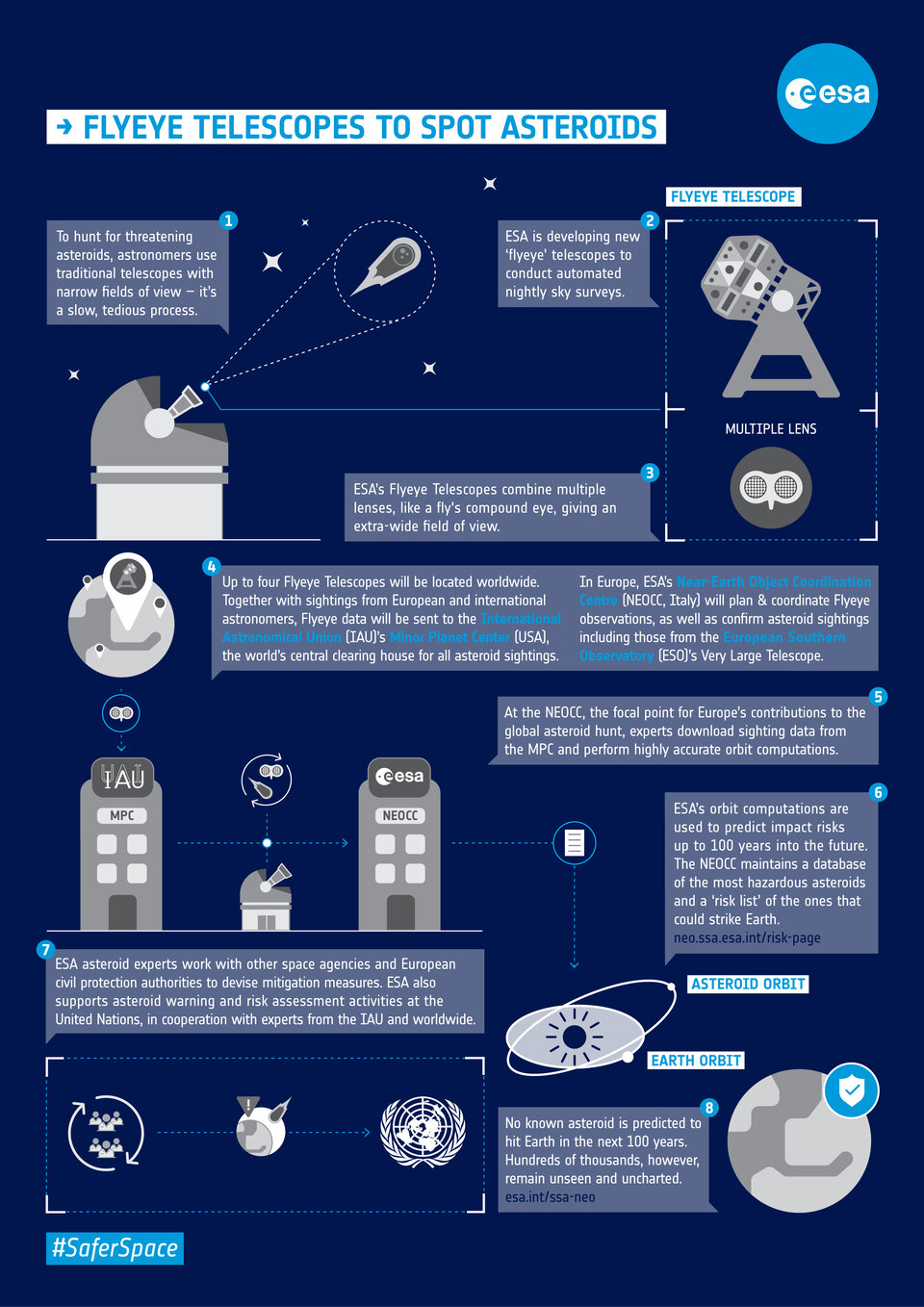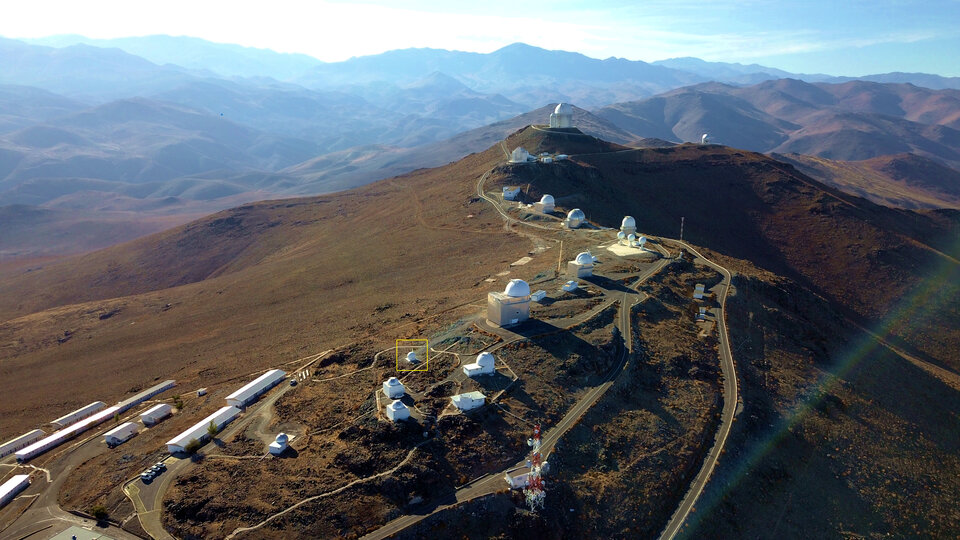29.04.2021

ESA’s second Test-Bed Telescope, hosted at the European Southern Observatory’s (ESO) La Silla Observatory in Chile, has seen ‘first light’ – when a new telescope is first used to look up.
A collaborative project with ESO, the telescope – dubbed ‘TBT2’ as it is the second of its kind after one built by ESA in Spain – will keep a close eye on the sky for near-Earth objects that could pose a risk to our planet. The 56-cm telescope will work alongside its identical partner telescope located at ESA’s deep space ground station in Cebreros.
“The project is a ‘test-bed’ to demonstrate the capabilities needed to efficiently detect and perform follow-up observations of near-Earth objects,” says Clemens Heese, ESA’s Head of the Optical Technologies Section and TBT project leader.

“While the telescopes themselves are of a rather standard design, they will enable us to develop and test the algorithms, remote operation and data processing techniques that our future ‘Flyeye’ telescope network will use to carry out automated, nightly surveys of the entire sky.”
Installing and achieving first light with the telescope at La Silla during the COVID-19 pandemic posed a great challenge. It was only made possible by the exceptional effort and commitment from all involved, working under special regulations to ensure the safety of everyone on site in Chile.
Watch the European Southern Observatory's ESOCast 237 on ESA's Test-Bed Telescope:
Unwelcome visitors

We currently know of more than 900 000 asteroids in our Solar System, of which around 25 000 are near-Earth objects whose orbit brings them close to Earth. Over 1 000 of these objects are on ESA's risk list, meaning we need to keep an eye on them with close follow-up observations.
Larger objects are, thankfully, easier to spot and the orbits of known large asteroids are already thoroughly studied. However, small- and medium-sized objects are far more common in the Solar System and can still do serious damage.
“To be able to calculate the risk posed by potentially hazardous objects in the Solar System, we first need a census of these objects,” says Ivo Saviane, the site manager for ESO’s La Silla Observatory. “The TBT project is a step in that direction.”
Flyeye: the night’s watch
Today, to hunt for threatening Solar System objects, astronomers use traditional telescopes with a narrow field of view. As these telescopes can only observe a small portion of the sky at a time, it is a slow and tedious process.
As part of the global effort to accelerate and improve this search, ESA is developing the Flyeye telescope. Its insect-inspired design gives it a much wider field of view, allowing it to cover large regions of the sky much quicker than traditional designs.

Every night, a future network of these Flyeye telescopes will scan the skies for rogue objects, automatically flagging any that pose an impact risk and bringing them to the attention of human researchers the next morning. The first Flyeye is now under construction and is scheduled to be installed on a mountain top in Sicily, Italy, in 2022.
The network will be entirely automated. Software will coordinate the scheduling and carrying out of observations and will highlight any threatening discoveries.
The collected data will then be submitted to the Minor Planet Center, triggering follow-up observations to better understand the orbits of these near-Earth objects and, eventually, their chance of impact.
The Test-Bed Telescope at La Silla is expected to enter routine use later this year.

